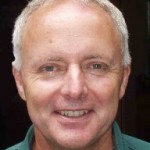Off the grid electricity data for Sydney’s Sustainable House
Since 31 March 2015 when the new battery and new solar panels were installed on my house we’ve been collecting data on the Tigo solar panels and Alpha Ess integrated battery and inverter systems.
The data is essential to reviewing the promises about the products’ performance and the best design to stay off grid.
Unfortunately, due to the Alpha Ess being brought to market before software had been fully tested, there are outages when no electricity was available to generate data.
Tigo DOES offer downloadable files, but in order to get hourly values, you have to download each day individually — that’s what makes Tigo time consuming. It’s not like the Efergy energy monitoring system, for example, where you can download hourly values for an entire month. Although that system is used in the house it is showing values 50% less than the Alpha and appears to be unreliable. The tedious, time-consuming task of downloading each day’s data from the Alpha and Tigo sites had to be undertaken; urk! My thanks to Marianna Verlage who endured this easily-fixed shortcoming. The other energy use monitoring system in the house is provided by Wattwatchers but for some reason it or the site which provides access to it, Our Green Home, hasn’t been providing data; perhaps the outages have affected it or the system has not been properly re-installed by the solar and battery folk when those systems went in. A work in progress here.
What the data tells me is I need another 2 kWh of available battery storage and another five more powerful solar panels with micro inverters to overcome shading and drops in panel power. That will go in next week.
Winter gives least sunlight so the data for this season, such as it is, is invaluable.
I’m sharing the data we have collected here with you to help you go off the electricity grid. There’ll be more data in the next few months.
Enjoy.
Michael


Just some data on a regional village based 100% off grid system for a 120sqm home . Climate is Alpine. 12 volt 1000ah (6 x 2v) wet cell traction batteries running 3/9kw inverter fed via 4.5kw of unshaded panels sitting at 15 deg angle to maximise skylight on cloudy days and still self clean . 2 x 80 amp mppt chargers.Winter solstice average is 13kwh per day , summer is 20kwh plus. System is “over-panelled” for a flatter , longer charge curve with good fog and drizzle skylight performance. Genset of 3.4kw use is 30 hours per year ( 6 x cycles using a 5 litre tank ) . Cost all up is $2.20 per day and approx 10kwh per day is consumed. Works out at $8k up front investment at $1 a day (interest on that) , battery and inverter replace budget $1 day (5-7 years ) plus fuel and genset consumables cost of $0.20 cents per day. Uptime is 5 x9′s , far better than mains ! Hot water is LPG at approx $100 year using 4 x 9kg bottles at $20 a fill n parallel due alpine to get the drawoff needed yet save on bottle rentals and can swap Over D.I.Y. . Cooking and heating is wood heater and gas cooker , plus induction and numerous other electric appliances – Use of gas or electric options depending on weather and time of day.Wood source is offcuts from local hardwood mill at $150 per year.. No cooling apart from ceiling fans. Surplus power feeds 2 x 450 watt wall panel heaters for the in between seasons when a fire is not needed during the day All lights are LED ( over 40 x 10w lights) , Led 40 inch TV , full size toaster oven , toaster , 2 x microwaves , 240 litre fridge , freezer .computers , stereo systems , power tools etc. Water pump has its own 120 watt panel and deep cycle battery to take the start surge load off main Inverter.Just like a normal house except you cant run everything at once. But you don’t always think of having to turn things off either !